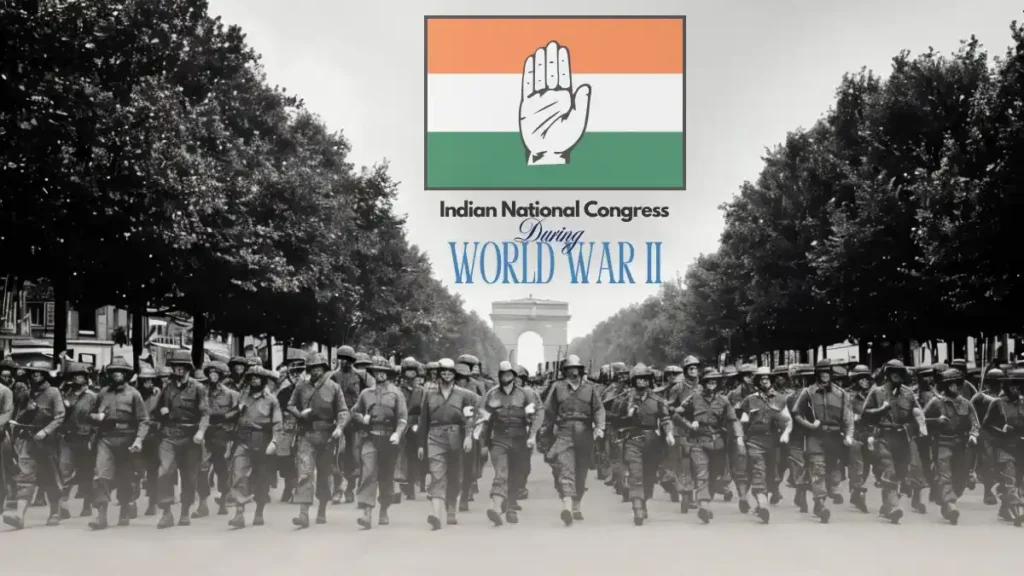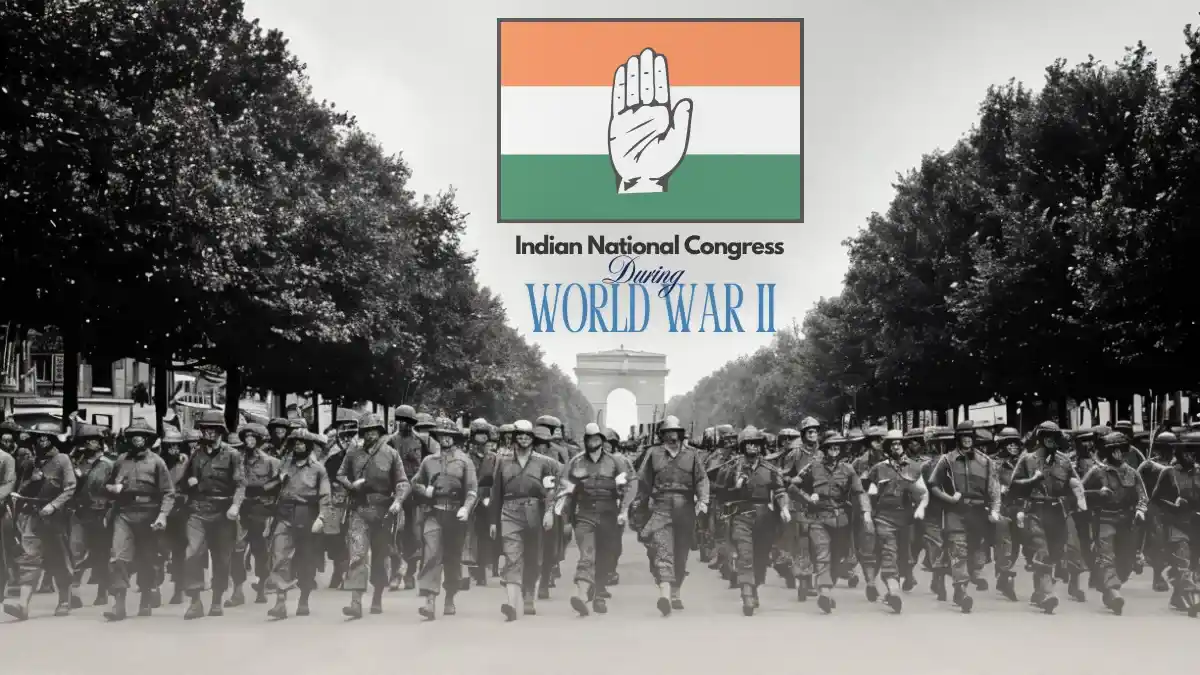Indian Congress During World War II Turning Point in Freedom Struggle
During World War II, the Indian National Congress (INC) played a critical role in shaping India’s political response to the global conflict. While the British government expected India’s support in the war, the INC had a different perspective. The party saw this as an opportunity to intensify its struggle for independence.
As tensions escalated, the INC, under the leadership of Mahatma Gandhi, passed the historic Quit India Resolution in 1942, urging citizens to participate in a mass movement against British rule. This decision significantly impacted India’s political landscape and influenced its path to independence.
The Indian National Congress and the Outbreak of World War II
When World War II began in 1939, India was still under British colonial rule. Without consulting Indian leaders, the British government declared India’s involvement in the war, which sparked resentment among the Indian political leadership.
The Indian National Congress strongly opposed this unilateral decision, arguing that India should not be forced into war without its consent. The INC demanded that Britain grant India complete independence in exchange for its support in the war effort. However, the British government refused to negotiate, leading to increased dissatisfaction among Indian leaders.
Also Read: How America Became a Superpower After WWII – Real Facts
Initial INC Reactions and Demand for Freedom
The Indian National Congress was initially divided on how to respond to the war. While some leaders believed that supporting the British might lead to political concessions, others, including Mahatma Gandhi, opposed cooperation without a clear promise of independence. In 1940, Congress leader Jawaharlal Nehru declared that while the party was against fascism, it could not support a colonial power that continued to oppress India. This growing frustration set the stage for more radical steps.
In 1942, with the war intensifying and Britain facing significant challenges, the INC saw an opportunity to push for India’s independence. The party passed the Quit India Resolution, calling for an immediate end to British rule. Gandhi’s famous slogan, “Do or Die,” inspired millions of Indians to take part in the movement, making it one of the largest civil disobedience movements in Indian history.

Quit India Movement: A Nationwide Uprising
The Quit India Movement, launched on August 8, 1942, became a defining moment in India’s struggle for freedom. The INC urged citizens to boycott British institutions, refuse to pay taxes, and engage in mass protests. The movement spread rapidly across the country, with people from all walks of life participating in demonstrations, strikes, and acts of civil disobedience.
The British government responded with severe repression, arresting thousands of INC leaders, including Gandhi, Nehru, and Sardar Patel. Despite the crackdown, the movement continued to gain momentum, with ordinary citizens taking up the fight against British rule. The protests and strikes disrupted governance and created significant pressure on British authorities, making it clear that India’s demand for independence could no longer be ignored.
Impact of INC Stand During World War II
The Quit India Movement had several long-term consequences:
- Increased Nationalism: The movement strengthened the resolve of Indian citizens, making independence an urgent and widely supported demand.
- Weakened British Control: The British government struggled to maintain control as widespread protests and unrest disrupted administration.
- Global Pressure on Britain: Internationally, Britain faced growing criticism for its oppressive policies in India while fighting for democracy in Europe.
- Political Legacy: The INC’s leadership during this period cemented its role as the primary force driving India’s independence movement.
British Response and the Path to Independence
Following the Quit India Movement, the British government realized that maintaining control over India was becoming increasingly difficult. Although the movement was eventually suppressed, it sent a clear message that Indians would no longer accept colonial rule.
Aldo Read: Mani Shankar Aiyar on Rajiv Gandhi’s Leadership Decisions
The war ended in 1945, and Britain, weakened by years of conflict, was in no position to continue ruling India. This led to fresh negotiations, eventually resulting in India’s independence on August 15, 1947.
In Conclusion, During World War II, the Indian National Congress made a bold decision to demand complete independence rather than compromise with the British. By urging citizens to participate in the Quit India Movement, the INC played a crucial role in shaping the final phase of India’s freedom struggle.
The movement highlighted the power of nonviolent resistance and mass civil disobedience, proving that colonial rule was no longer sustainable. Today, the INC’s actions during the war remain a testament to India’s unwavering commitment to achieving self-rule.

